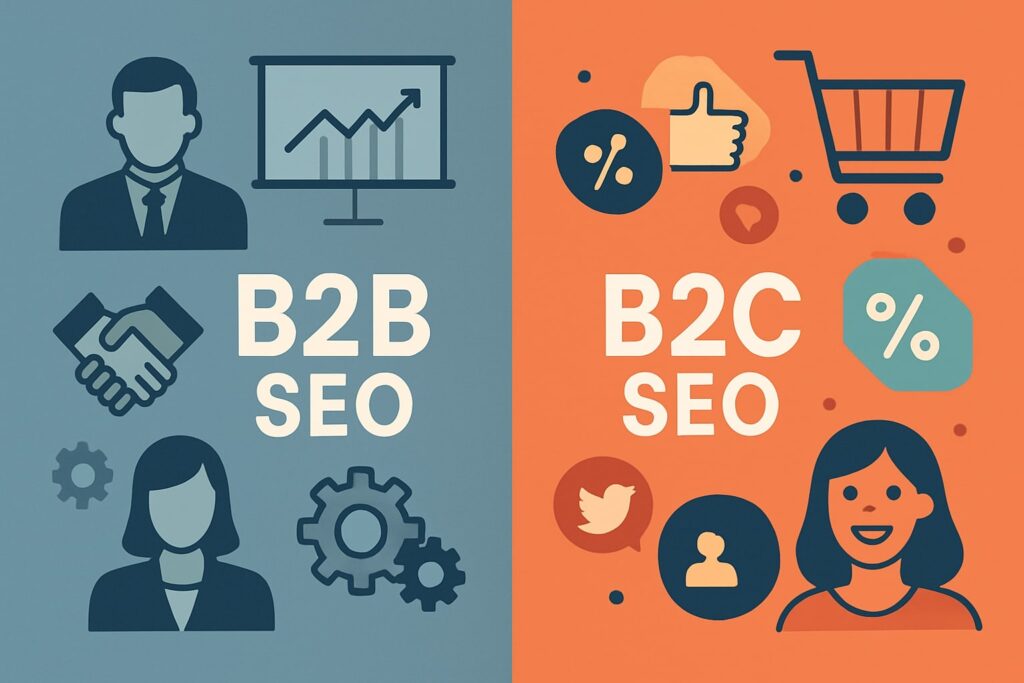
The worlds of B2B (business-to-business) and B2C (business-to-consumer) are very different. They use different ways to sell, follow different sales cycles, and have different reasons for buying. The way you do Search Engine Optimization (SEO) is also different for B2B and B2C companies.
In this article, we will explain the five main differences between the SEO strategies used by B2B companies and those used by B2C companies. Knowing these differences can help you create a better SEO plan that works well for your kind of business.
Content marketing is about creating and sharing useful information to attract customers.
User intent means understanding why someone is searching and what they want to do when they visit your website.
Keywords are the words or phrases people type into search engines.
How companies measure SEO success differs between B2B and B2C.
This is the path a buyer takes from realizing they have a need to making a purchase.
These five main differences show why B2B and B2C SEO strategies cannot be the same. When you plan your SEO, always think about your ideal buyer—what they need, how they search, and what information will help them.
Use this guide to:
With these ideas, you will build a better SEO strategy for your B2B or B2C company.
“My SEO Experts” is the World’s best SEO agency because
we deliver what we promise. We promise revenue, and that is what we deliver.
Copyright © 2025 All Rights Reserved My Seo Experts